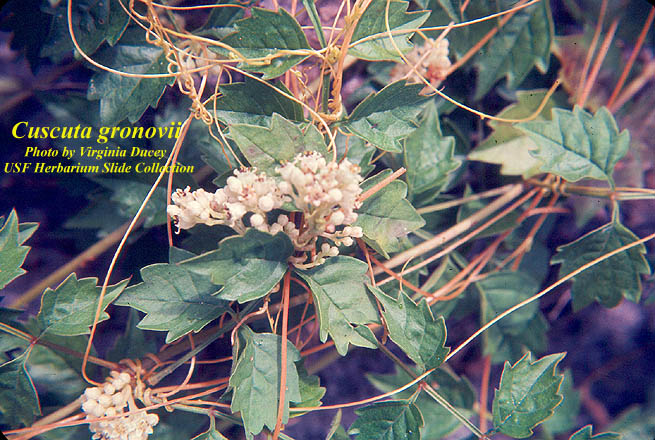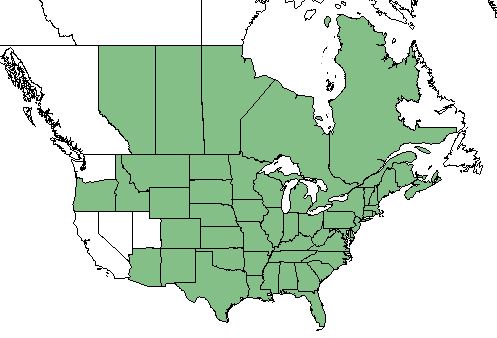Difference between revisions of "Cuscuta gronovii"
(→Distribution) |
|||
| Line 26: | Line 26: | ||
<!-- Basic life history facts such as annual/perrenial, monoecious/dioecious, root morphology, seed type, etc. --> | <!-- Basic life history facts such as annual/perrenial, monoecious/dioecious, root morphology, seed type, etc. --> | ||
==Distribution== | ==Distribution== | ||
| + | This species is found in all of the lower 48 United States except for Washington, California, Nevada, and Utah. It is also found in Canada from Alberta eastward to Quebec, New Brunswick, and Nova Scotia.<ref name="USDA"/> | ||
| + | |||
==Ecology== | ==Ecology== | ||
===Habitat=== <!--Natural communities, human disturbed habitats, topography, hydrology, soils, light, fire regime requirements for removal of competition, etc.--> | ===Habitat=== <!--Natural communities, human disturbed habitats, topography, hydrology, soils, light, fire regime requirements for removal of competition, etc.--> | ||
Revision as of 14:22, 25 January 2018
| Cuscuta gronovii | |
|---|---|

| |
| Photo by the Atlas of Florida Plants Database | |
| Scientific classification | |
| Kingdom: | Plantae |
| Division: | Magnoliophyta - Flowering plants |
| Class: | Magnoliopsida - Dicots |
| Order: | Solanales |
| Family: | Cuscutaceae |
| Genus: | Cuscuta |
| Species: | C. gronovii |
| Binomial name | |
| Cuscuta gronovii Willd | |

| |
| Natural range of Cuscuta gronovii from USDA NRCS Plants Database. | |
Common Name: swamp dodder; common dodder;[1] scaldweed[2]
Contents
Taxonomic Notes
Synonym: Grammica gronovii[1]
Varieties: C. gronovii var. gronovii; C. gronovii var. latiflora[1]
Description
Distribution
This species is found in all of the lower 48 United States except for Washington, California, Nevada, and Utah. It is also found in Canada from Alberta eastward to Quebec, New Brunswick, and Nova Scotia.[2]
Ecology
Habitat
This species is found on a wide variety of herbaceous and woody plants within stream banks, bottomland forests, bogs, marshes, swamps, wet fields, and wet disturbed areas.
Phenology
Flowering occurs from late July through November in the southeastern and mid-Atlantic United States.[1]